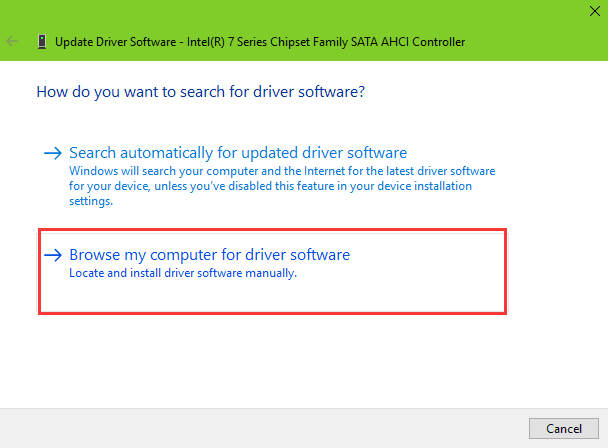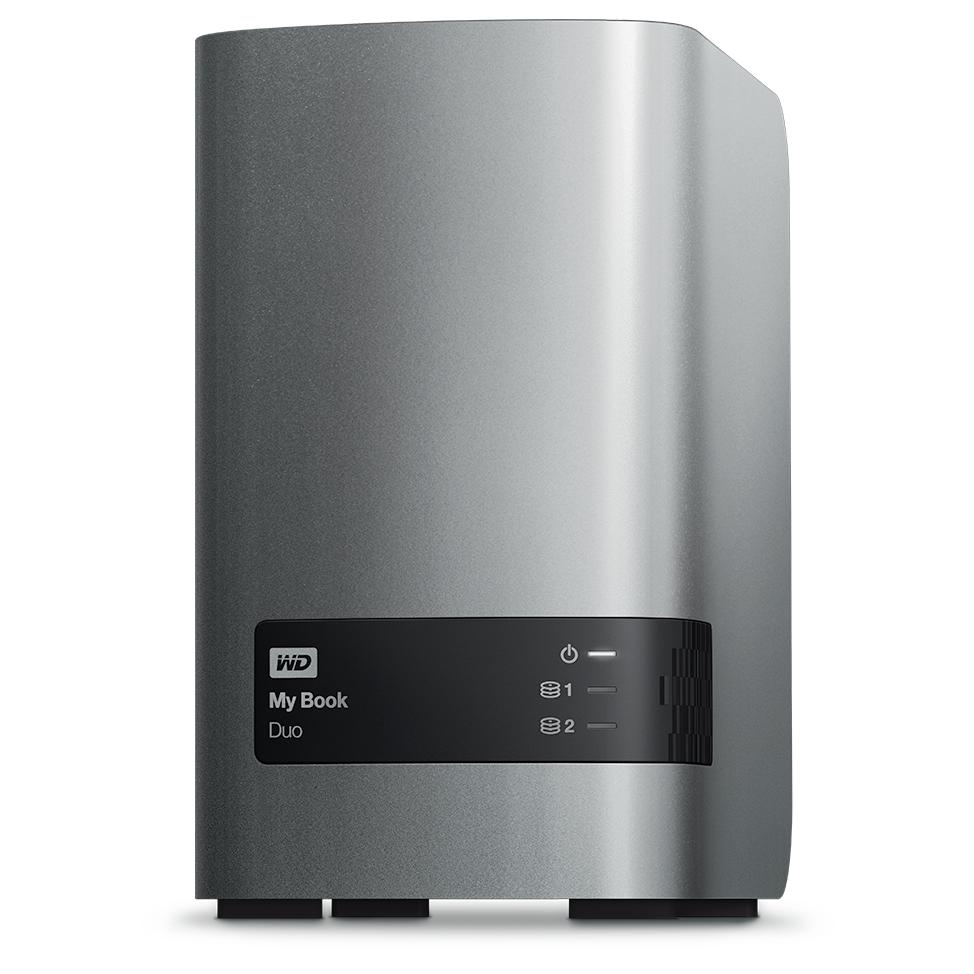
* RECOMMENDED * HPE Smart Array Gen10 Controller Driver for Windows Server 2012 R2 and Windows Server 2016 By downloading, you agree to the terms and conditions of the Hewlett Packard Enterprise Software License Agreement.
Note: Some software requires a valid warranty, current Hewlett Packard Enterprise support contract, or a license fee. | Type: | Driver - Storage Controller | | Version: | 100.52.1.64(5 Feb 2018) | | Operating System(s): | | Microsoft Windows Server 2012 R2 | | Microsoft Windows Server 2016 |
Microsoft Windows 10 (64-bit) | | Multi-part download | | File name: | cp032545.compsig (2.0 KB) | | File name: | cp032545.exe (826 KB) |
This component provides support for the HPE Smart Array Gen10 E-series and P-series controllers Upgrade Requirement:
Recommended - HPE recommends users update to this version at their earliest convenience. - Enhanced controller cache management when doing an OS shutdown, hibernate, or sleep.
- Enabled PCI Passthrough on Hyper-V.
To ensure the integrity of your download, HPE recommends verifying your results with the following SHA-256 Checksum values: | 8a1745bd7baa6a2be5c1f7463268e55751d82698c6f3ab3c115e8e0223a4f056 | cp032545.compsig | | e5ea03f105086191f448fb3e18460d30b9157929572e3bd0578ff5381265a8c2 | cp032545.exe |
Reboot Requirement:
Reboot is required after installation for updates to take effect and hardware stability to be maintained. Installation:
Download the Smart Component to a directory on your hard drive and change to that directory. The downloaded file is a self-extracting executable with a filename based on the Smart Component Number.
From that drive and directory, execute the downloaded file. End User License Agreements:
HPE Software License Agreement v1
Hewlett-Packard End User License Agreement
Upgrade Requirement:
Recommended - HPE recommends users update to this version at their earliest convenience. Version:106.190.4.1062 (21 Dec 2020) Upgrade Requirement:
Recommended - HPE recommends users update to this version at their earliest convenience. This release provides the following fixes: The driver was not setting the feature bit to inform the controller to return a unique WWN ID per SATA drive via Inquiry VPD 0x83 rather then returning WWN ID per SAT drive port. While executing HCK CHAOS test, SmartPQI driver crashes with bugcheck 0x7A (KERNEL_DATA_INPAGE_ERROR). While rebooting, the SmartPQI driver crashes with bugcheck 0xD1 An issue where Sleep test causes the SmartPQI driver to trigger a bugcheck 0xD1. Fixed an issue while executing driver disable/reinstall, the SmartPQI driver crashes with bugcheck 0xD1
Fixed an issue where the application hangs due to lost command. When issuing 'Get-Disk' from Powershell, the command would eventually hang indefinitely. Fixed the registry lookup for determining where I/O is completed was using the string ' SubmitViaStartIo ' instead of ' CompleteIoInDpc '. Fixed an issue where while executing sleep, the windows SmartPQI driver crashes with bugcheck 0x7E. Fixed an issue where the system would BSOD when doing unnecessary initialization of the multi-tag table after declaring controller lockup. Fixed an issue that causes a DRIVER_POWER_STATE_FAILURE BSOD
Added an enhancement to fix the stale Drive fi rm ware version returned by a Power Shell command. (11 Aug 2020) Upgrade Requirement:
Recommended - HPE recommends users update to this version at their earliest convenience. Minor fixes required for functionality of FW 3.0 Upgrade Requirement:
Recommended - HPE recommends users update to this version at their earliest convenience. Smartpqi driver 106.178.0.1009 supports the latest versions of Microsoft Windows OS environments and it is recommended for used with HPE Gen10 Smart Array controllers FW 3.0 (20 Dec 2019) Upgrade Requirement:
Recommended - HPE recommends users update to this version at their earliest convenience. - When executing a “PCS-E2Launch” the system cause stop responding due to the internal controller command accessing the cmdinfo SRB.
(9 Sep 2019) Upgrade Requirement:
Recommended - HPE recommends users update to this version at their earliest convenience. Fix the following issues: - System may become unresposive during initialization of s DC OFF/ON test
- Corrected a wrong character displayed by Device Manager in a Japanese environment
- Issue where a PQI reset was sent incorrectly to the controller causing the PNP WHQL test case to fail
- Data could become inaccesible when a reboot is executed while the controller is in dump mode because the Power SRB completed before the cache flush
(2 Apr 2019) Upgrade Requirement:
Recommended - HPE recommends users update to this version at their earliest convenience. - Improved integration with Smart Update Manager
(27 Nov 2018) Upgrade Requirement:
Recommended - HPE recommends users update to this version at their earliest convenience.
Note: If version 100.62.0.64 was previously installed, then it is not necessary to upgrade to version 100.62.0.64 (A) Added support for Windows Server 2019. (26 Jun 2018) Upgrade Requirement:
Recommended - HPE recommends users update to this version at their earliest convenience. - Windows 2016 fails cluster validation test.
- Windows “Removal Policy” incorrectly set to TRUE.
(5 Feb 2018) Upgrade Requirement:
Recommended - HPE recommends users update to this version at their earliest convenience. - Enhanced controller cache management when doing an OS shutdown, hibernate, or sleep.
- Enabled PCI Passthrough on Hyper-V.
(20 Dec 2017) Upgrade Requirement:
Recommended - HPE recommends users update to this version at their earliest convenience. Initial driver release for HPE P/E-Class SR Gen10 controllers. - Added support for Windows 10 operating system.
(25 Sep 2017) Upgrade Requirement:
Recommended - HPE recommends users update to this version at their earliest convenience. Added support for the following Gen10 servers: - HPE ProLiant XL190r Gen10 Server
- HPE ProLiant XL170r Gen10 Server
- HPE ProLiant DL180 Gen10 Server
- HPE ProLiant DL160 Gen10 Server
- HPE ProLiant DL580 Gen10 Server
- HPE ProLiant ML110 Gen10 Server
- HPE ProLiant ML350 Gen10 Server
- HPE ProLiant XL450 Gen10 Server
- HPE ProLiant DL120 Gen10 Server
(12 Jul 2017) Upgrade Requirement:
Recommended - HPE recommends users update to this version at their earliest convenience. - Initial driver release for HPE P/E-Class SR Gen10 controllers.
| Type: | Driver - Storage Controller | | Version: | 100.52.1.64(5 Feb 2018) | | Operating System(s): | | Microsoft Windows 10 (64-bit) | | Microsoft Windows Server 2012 R2 | | Microsoft Windows Server 2016 |
|
DescriptionThis component provides support for the HPE Smart Array Gen10 E-series and P-series controllers EnhancementsUpgrade Requirement:
Recommended - HPE recommends users update to this version at their earliest convenience. - Enhanced controller cache management when doing an OS shutdown, hibernate, or sleep.
- Enabled PCI Passthrough on Hyper-V.
Installation InstructionsTo ensure the integrity of your download, HPE recommends verifying your results with the following SHA-256 Checksum values: | 8a1745bd7baa6a2be5c1f7463268e55751d82698c6f3ab3c115e8e0223a4f056 | cp032545.compsig | | e5ea03f105086191f448fb3e18460d30b9157929572e3bd0578ff5381265a8c2 | cp032545.exe |
Reboot Requirement:
Reboot is required after installation for updates to take effect and hardware stability to be maintained. Installation:
Download the Smart Component to a directory on your hard drive and change to that directory. The downloaded file is a self-extracting executable with a filename based on the Smart Component Number.
From that drive and directory, execute the downloaded file. Release NotesEnd User License Agreements:
HPE Software License Agreement v1
Hewlett-Packard End User License Agreement
Upgrade Requirement:
Recommended - HPE recommends users update to this version at their earliest convenience. Revision HistoryVersion:106.190.4.1062 (21 Dec 2020) Upgrade Requirement:
Recommended - HPE recommends users update to this version at their earliest convenience. This release provides the following fixes: The driver was not setting the feature bit to inform the controller to return a unique WWN ID per SATA drive via Inquiry VPD 0x83 rather then returning WWN ID per SAT drive port. While executing HCK CHAOS test, SmartPQI driver crashes with bugcheck 0x7A (KERNEL_DATA_INPAGE_ERROR). While rebooting, the SmartPQI driver crashes with bugcheck 0xD1 An issue where Sleep test causes the SmartPQI driver to trigger a bugcheck 0xD1. Fixed an issue while executing driver disable/reinstall, the SmartPQI driver crashes with bugcheck 0xD1
Fixed an issue where the application hangs due to lost command. When issuing 'Get-Disk' from Powershell, the command would eventually hang indefinitely. Fixed the registry lookup for determining where I/O is completed was using the string ' SubmitViaStartIo ' instead of ' CompleteIoInDpc '. Fixed an issue where while executing sleep, the windows SmartPQI driver crashes with bugcheck 0x7E. Fixed an issue where the system would BSOD when doing unnecessary initialization of the multi-tag table after declaring controller lockup. Fixed an issue that causes a DRIVER_POWER_STATE_FAILURE BSOD
Added an enhancement to fix the stale Drive fi rm ware version returned by a Power Shell command. (11 Aug 2020) Upgrade Requirement:
Recommended - HPE recommends users update to this version at their earliest convenience. Minor fixes required for functionality of FW 3.0 Upgrade Requirement:
Recommended - HPE recommends users update to this version at their earliest convenience. Smartpqi driver 106.178.0.1009 supports the latest versions of Microsoft Windows OS environments and it is recommended for used with HPE Gen10 Smart Array controllers FW 3.0 (20 Dec 2019) Upgrade Requirement:
Recommended - HPE recommends users update to this version at their earliest convenience. - When executing a “PCS-E2Launch” the system cause stop responding due to the internal controller command accessing the cmdinfo SRB.
(9 Sep 2019) Upgrade Requirement:
Recommended - HPE recommends users update to this version at their earliest convenience. Fix the following issues: - System may become unresposive during initialization of s DC OFF/ON test
- Corrected a wrong character displayed by Device Manager in a Japanese environment
- Issue where a PQI reset was sent incorrectly to the controller causing the PNP WHQL test case to fail
- Data could become inaccesible when a reboot is executed while the controller is in dump mode because the Power SRB completed before the cache flush
(2 Apr 2019) Upgrade Requirement:
Recommended - HPE recommends users update to this version at their earliest convenience. - Improved integration with Smart Update Manager
(27 Nov 2018) Upgrade Requirement:
Recommended - HPE recommends users update to this version at their earliest convenience.
Note: If version 100.62.0.64 was previously installed, then it is not necessary to upgrade to version 100.62.0.64 (A) Added support for Windows Server 2019. (26 Jun 2018) Upgrade Requirement:
Recommended - HPE recommends users update to this version at their earliest convenience. - Windows 2016 fails cluster validation test.
- Windows “Removal Policy” incorrectly set to TRUE.
(5 Feb 2018) Upgrade Requirement:
Recommended - HPE recommends users update to this version at their earliest convenience. - Enhanced controller cache management when doing an OS shutdown, hibernate, or sleep.
- Enabled PCI Passthrough on Hyper-V.
(20 Dec 2017) Upgrade Requirement:
Recommended - HPE recommends users update to this version at their earliest convenience. Initial driver release for HPE P/E-Class SR Gen10 controllers. - Added support for Windows 10 operating system.
(25 Sep 2017) Upgrade Requirement:
Recommended - HPE recommends users update to this version at their earliest convenience. Added support for the following Gen10 servers: - HPE ProLiant XL190r Gen10 Server
- HPE ProLiant XL170r Gen10 Server
- HPE ProLiant DL180 Gen10 Server
- HPE ProLiant DL160 Gen10 Server
- HPE ProLiant DL580 Gen10 Server
- HPE ProLiant ML110 Gen10 Server
- HPE ProLiant ML350 Gen10 Server
- HPE ProLiant XL450 Gen10 Server
- HPE ProLiant DL120 Gen10 Server
(12 Jul 2017) Upgrade Requirement:
Recommended - HPE recommends users update to this version at their earliest convenience. - Initial driver release for HPE P/E-Class SR Gen10 controllers.
|
|
Reset Windows Password: load additional IDE, SATA, SCSI, RAID, NVME drivers. If when the application started it was unable to detect one or several hard disk drives, you will most likely need to install a driver for that device. In the main window, on the task list, select 'Load IDE/SATA/SCSI/RAID/NVME driver' and go to the driver installation. Download Standard IDE/ESDI Hard Disk Controller for Windows to hdc driver.
Legal Disclaimer: Products sold prior to the November 1, 2015 separation of Hewlett-Packard Company into Hewlett Packard Enterprise Company and HP Inc. may have older product names and model numbers that differ from current models. |
|

If the hard disk in your Laptop is not detected by Lazesoft boot disk, you need to load disk/RAID drivers from the Lazesoft boot disk in order for WinPE to recognize your hard disk.
For example, some Laptops use Intel Rapid Storage Technology to improve SATA hard disk performance. If the Intel RST is set as AHCI or RAID mode, you need to load the Intel Rapid Storage Technology (Intel RST) RAID/AHCI driver. If your Laptop is 32 bit, please create a 32 bit Lazesoft boot disk and load the 32 bit driver. If your Laptop is 64 bit, please create a 64 bit Lazesoft boot disk and load the 64 bit driver.
For your computer, you need to load the 64 bit driver for Intel Rapid Storage Technology (Intel RST) RAID driver.

Aska Hard Disk Controller Driver Download For Windows 10

Here is the download page from Intel:

Aska Hard Disk Controller Driver Download For Windows 8.1
https://downloadcenter.intel.com/Detail_Desc.aspx?agr=Y&ProdId=2101&DwnldID=23496&ProductFamily=Software+Products&ProductLine=Chipset+Software&ProductProduct=Intel%C2%AE+Rapid+Storage+Technology+(Intel%C2%AE+RST)&lang=eng
The following are the steps to load Intel RST drivers for a Windows 8/8.1 64 Laptop:
Aska Hard Disk Controller Driver Download For Windows
- Launch Lazesoft Recovery Suite.
- Click <Burn CD/USB disk> on the home page of Lazesoft Recovery Suite.
- Select the target computer version as Windows 8 64 bit on the home page of Lazesoft Media Builder.
- Follow the wizard to create a bootable USB disk.
- Download the drive package, f6flpy-x64.zip from the download link from Intel, https://downloadcenter.intel.com/Detail_Desc.aspx?agr=Y&ProdId=2101&DwnldID=23496&ProductFamily=Software+Products&ProductLine=Chipset+Software&ProductProduct=Intel%C2%AE+Rapid+Storage+Technology+(Intel%C2%AE+RST)&lang=eng
- Decompress the drive package to open a folder.
- Copy the folder to the new burned USB boot flash drive.
- Reboot your target computer from the new burned USB boot flash drive.
- After the Lazesoft Recovery Suite is launched, click the <Load drivers> button on the home page.
- Load the <iaAHCIC.inf>, and then load <iaStorAC.inf> from the USB disk.





